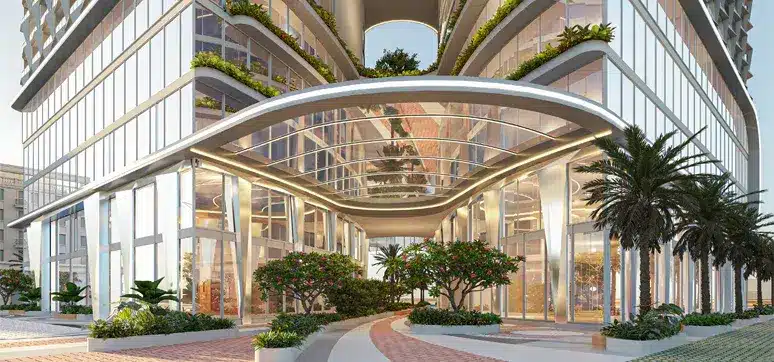How have you seen the adoption of BIM evolve in the field of architecture and façade design over the years?
Over the years, the adoption of BIM in architecture and façade design has witnessed a remarkable evolution. Initially regarded as a technological novelty, BIM has progressively become an indispensable tool for us, as architects and designers. Its integration into the design process has streamlined collaboration, enhanced visualisation, and improved project efficiency. From conceptualisation to construction, BIM has revolutionised how architectural and façade projects are conceived, executed, and managed. Moreover, BIM has fundamentally changed the way we work and collaborate at the office. With our offices in different locations, BIM proves to be even more valuable in aligning the work of diverse teams and maintaining consistency across various project phases.
In your experience, what are the most significant advantages of using BIM in architectural and façade projects?
 From my experience, the most significant advantages of using BIM in architectural and façade projects include enhanced collaboration among multidisciplinary teams, improved project coordination, accurate quantity take- offs, clash detection, and the ability to simulate real- world conditions digitally. BIM enables us, as leaders to make informed decisions throughout the project lifecycle, leading to improved efficiency, reduced errors, and ultimately, higher-quality outcomes.
From my experience, the most significant advantages of using BIM in architectural and façade projects include enhanced collaboration among multidisciplinary teams, improved project coordination, accurate quantity take- offs, clash detection, and the ability to simulate real- world conditions digitally. BIM enables us, as leaders to make informed decisions throughout the project lifecycle, leading to improved efficiency, reduced errors, and ultimately, higher-quality outcomes.
What are the benefits of implementing BIM and parametric processes for façades?
Implementing BIM and parametric processes for façades offers numerous benefits, including enhanced design exploration and optimisation, precise control over geometric complexities, seamless integration with architectural models, automated documentation generation, and improved communication among project leaders. These technologies empower designers to efficiently iterate through design variations, respond to changing requirements, and achieve innovative and sustainable façade solutions.
How do you see BIM integrating with other emerging technologies, such as augmented reality (AR) or virtual reality (VR), in the context of architectural and façade design?
BIM’s integration with emerging technologies such as augmented reality (AR) and virtual reality (VR) presents exciting opportunities for architectural and façade design. AR and VR applications enhance stakeholders’spatial understanding, enabling immersive visualisation of designs in real-world contexts.
What challenges do you believe still exist in the widespread adoption of BIM in the architecture and façade industry?
Sometimes challenges include initial investment costs, interoperability issues among different software platforms, and resistance to change within traditional workflows from other consultants working on the project.
How can BIM contribute to sustainable design practices, particularly in the context of façade materials and energy efficiency?
BIM enables comprehensive analysis and optimisation of building performance metrics such as thermal comfort, daylighting, and energy consumption, BIM facilitates informed decision-making during the design phase.
How technology can be used to reduce costs, reduce defects, and improve designs?
 Technology plays a pivotal role in reducing costs, minimising defects, and enhancing design quality throughout the project design process. By leveraging BIM and related digital tools, we can optimise material quantities, and identify potential clashes or constructability issues early in the design process.
Technology plays a pivotal role in reducing costs, minimising defects, and enhancing design quality throughout the project design process. By leveraging BIM and related digital tools, we can optimise material quantities, and identify potential clashes or constructability issues early in the design process.
Why does BIM appear to be fundamental in the current architectural design? How can architects use BIM to streamline complex façade design?
BIM’s significance in streamlining complex façade design lies in its ability to facilitate integrated design workflows, comprehensive performance analysis, and seamless collaboration among project stakeholders. Through BIM-enabled parametric modeling, architects can efficiently explore and optimise façade geometries, analyse environmental impacts and iterate through design iterations with precision and agility.














